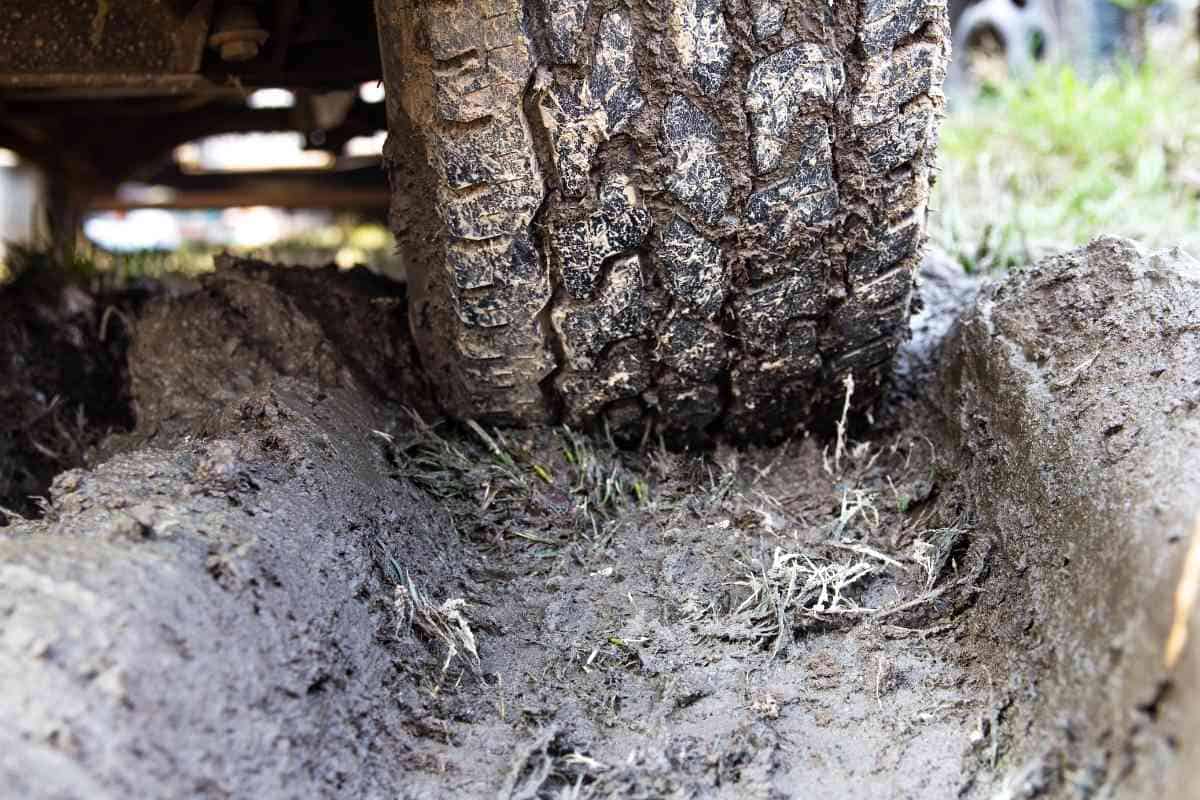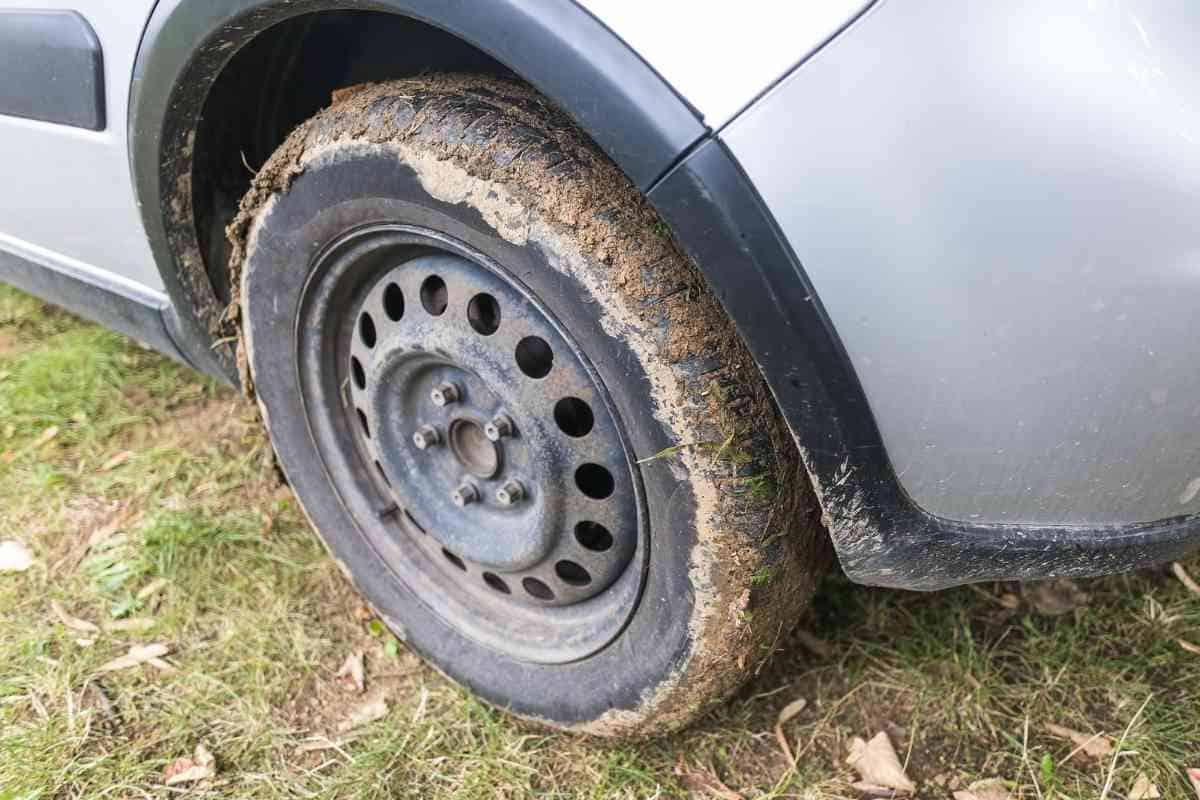Do Mud Tires Cause Vibration? Why And How To Fix It!
Mud tires can make off-roading a lot more effective and run by offering you better traction. But do mud tires cause the vehicle to vibrate when traveling in your SUV or truck? The aggressive and thick look of mud tires makes them look like they could readily have a vibration problem. Vibration can be a bit annoying and indicate problems – but do mud tires cause your truck to shake?

Do mud tires cause your truck to vibrate?
Mud tires themselves could potentially cause vibration at high speeds. In reality, any tire that is out of balance can readily make a vehicle vibrate at almost any speed, mud tires are just a bit more likely to have a balance issue.
That leaves us with a couple more questions: What causes tire vibration? What makes mud tires more susceptible to vibration – is it really the size?
We’ve done off-roading and had our share of problems with tires. We’ll walk you through the causes of vibration in your mud tires and more.
What causes tire vibration?
While the initial question is about mud tires and vibration, we are going to start by explaining the vibration part before the “mud” part because understanding the source will help you realize it’s not just mud tires!
Tire vibration is caused most often by the following:
Uneven Tire Wear
This happens in two ways. One tire can have uneven wear that results in a “cupping” appearance where the tread is thicker or more thin in one area than the other, creating a gap that makes the tire adjust a bit to get to pavement.
This can be more pronounced if the tire on the other side is normal – which is often the case. You might feel a slight, but frequent “jump” from one side of the vehicle when you brake as a result.
Damaged Tires
Tires are supposed to be pretty close to round. Nothing is ever quite perfectly round, but if they start taking on a slight oval or egg shape, there is probably a problem within the tire that is heavily contributing to vibration and an uneven tire turn
Unbalanced Tires
An educated guess based on knowing lots about tires tells us this might be your problem. We’ll go into more detail in our next section.
Mud Tires, Unbalanced Tires, and Vibrations

We’ll lay out a few facts here to put together a why: Mud tires tend to be larger than average. The average standard truck tire (not a mudding tire) is around 31”. Mudding tires are often in the range of 33” to 37”. With a larger tire comes more weight and more surface area, increasing the chance of uneven wear and uneven weight.
Add to this that mud tires tend to go on unpredictable terrain and are more likely to have excess wear in some areas, and there’s a decent chance your tires are a bit uneven.
How do I balance mud tires?
One of the better options to balancing mud tires to reduce vibration is adding weights. You’ve probably seen weights on tires before, you just didn’t recognize them. Weights are simply pieces of heavy metal added to the inside of the tire by way of adhesive. Their weight helps balance the tire while rotating at high speed like on highways.
You’ll probably want to get some help from a tech shop determining the actual location and need for weights, as otherwise figuring out what causes the least vibration comes from lots of trial and error.
So mud tires don’t directly cause vibration?
To be real clear: Any tires on any vehicle can vibrate, often for the same reasons: suspension problems or uneven tire wear. Mud tires are more likely to have issues because of the tire size and the likelihood of uneven wear.
When we say vibrate, we mean that the steering wheel can shake a bit and you’ll feel the whole vehicle shake a little.
Mud tires might also feel a bit different from all-terrain tires because their treads are thicker and more aggressive – so they will sound and feel different from your all-season tires that are meant for pavement, dirt, snow, and rain. The feeling isn’t so much shaking – but with big, thick tires it’ll probably be louder than you thought and might feel just a bit numb on the pavement.
When should I worry about vibration?
The issue is that vibration will continue until you attempt to fix it. If you feel like the vehicle is vibrating a lot, or the vehicle is difficult to control at high speed (more than normal) then you might also want to look at suspension-related issues in addition to major tire problems.
Why would mud tires potentially wear more unevenly?
People who drive on mud tires also experience uneven roads, rocks, and unexpected, not quite flat surfaces. Off-road scenarios do indeed lend to more tire wear, regardless of how thick the tread or tire is designed.
Imagine driving over some rocks (or for that matter a tire course) and having only two wheels on the ground temporarily, but doing it over and over again. This could readily lead to having a couple of tires that don’t wear quite the same as the opposite side.
You should also have your brake pads and brake rotors checked out too, as they may also be causing vibrations and other engine issues.
Are bigger mud tires more difficult to balance than smaller tires?
A bigger tire requires more precision, and often more weight attached to make it truly balanced. The challenge you might find in balancing a larger mud tire is that there is often more than one problem area that requires balancing, and arranging weights in an effective manner is a bit more trial and error.
You can remove weights, including those applied with adhesive, and try to drive your mud tire vehicle again until you feel like the vehicle is driving without vibrating.
Suspension and bearings
Another major cause of vibrations is problems with the suspension and with wheel bearings. While mud tires are sometimes the culprit, consider having your bearings and suspension looked at to see if they are the problem.
This might be especially true if you only recently installed newer mud tires – they should be even, and the vehicle itself might be the problem.
Having a tie rod break during off-roading doesn’t like our idea of a good time, so we recommend getting these potential problems inspected before putting new mud tires on.
Rotate your tires
Amongst the easiest solutions is to simply rotate your tires, though it doesn’t always solve the problem of vibration. As you may know, tire rotation is a simple matter of removing tires and switching them to a different spot to encourage even wear. The front tires go to the rear tires etc.
The only problem here is that in the off-road world, you might have to do this more frequently than normal.
